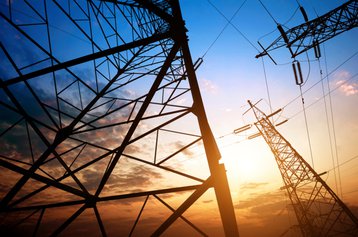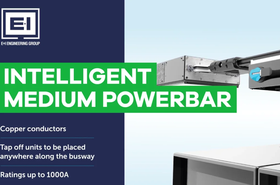A mission critical facility is commonly defined as any facility containing operations that if interrupted will have a significant and adverse impact on the organization’s core activities. This impact can range from loss of revenue or data to compromised credibility and in the most severe case, consequences can include loss of life.
As technology continues to widen its grip on society, organizations are becoming more and more dependent on critical power systems to carry out their business operations. As a result, availability and reliability of power has become an absolute necessity for mission critical facilities to remain competitive.
As the saying goes, “You’re only as strong as your weakest link” and this has never been more true for mission critical power systems as they grow in complexity, creating more potential weak points within the system, in turn leaving organizations vulnerable to power failure.
Four key risks to uptime in power distribution systems
1. Lack of visibility
Visibility is arguably the single most important requirement for the effective management of mission critical power infrastructure. Without sufficient visibility over system performance facility managers will lack the insight required to proactively manage their mission critical operations and pre-empt issues before they occur.
Advanced electronic monitoring solutions can be integrated into the power system to monitor and analyse the electrical flow within a building to provide an in-depth analysis of the power network. This enables mission critical managers to benefit from a more holistic approach to power management, where critical infrastructure is monitored and managed from one central, intelligent system. If the monitoring system detects an error with any component in the power distribution system, it will create an automatic alert. Without this alert, mission critical managers run the risk of critical issues going undetected until they cause a power failure.
2. Lack of resources
Whilst visibility is vital to pre-empt potential issues, the risk of downtime cannot be effectively mitigated unless the issues identified are properly managed.
The problem for many mission critical facility managers is that as demand for data grows, so too does the complexity of their power infrastructure and monitoring systems. In an on-premises environment, mission critical facilities manage their own data and are fully in control of what happens to it. Therefore, if adequate skills and resources are not available internally to analyse and interpret monitoring outputs, the mission critical power supply cannot be efficiently protected from unplanned downtime.
In this case, SaaS for mission critical energy management can provide a more suitable solution. This solution provides a more efficient and secure means of mission critical power protection, where all power monitoring and management operations are outsourced to a third-party company who remotely monitor the mission critical power system. Experts will flag any impending issues that may sacrifice continuity of power and advise on restorative. Whilst this takes the strain off internal resources, it is important to choose a service provider with the level of expertise required to manage your system data efficiently and accurately.
3. Unsecure systems
Security is a much larger issue than often realized, with many cyber-attacks on mission critical businesses still going un-reported. There are a number of reasons why cyber-attacks are swept under the carpet, including to protect brand reputation or to avoid highlighting that could attract further attacks.
it is actually estimated that around 146 billion sensitive records will be exposed between 2018 and 2023. With this in mind, it is vital that mission critical facilities make system security their priority, as the slightest weak spot could leave critical power supplies vulnerable to attack.
The aim of cyber security solutions in the energy sector is to support the reliability and resilience of mission critical power in the event of a cyber-attack. There is a shared responsibility between the vendor and customer when it comes to providing system security. Firstly, it is expected that any reputable vendor will provide the highest standard of security within their system and address any bespoke security requirements. Secondly, and most importantly is how the system is managed, as the mission critical operator will ultimately assume responsibility for any data breach or loss of power that impacts their business.
Cyber security management best practices include operating other critical operations from a separate network, system mapping, controlled access and conducting regular security assessments.
4. Power instability
Power instability is a key concern within the mission critical power industry, with downtime not just being inconvenient but also having a potentially fatal impact in healthcare facilities, where life preserving equipment require power around the clock. This presents a significant challenge for mission critical operators in countries with poor power infrastructure or unstable power grids. In addition to this, the power generation mix has changed significantly over the last decade due to increasing environmental pressures and development of new technologies. As a result, power instability is becoming a greater concern as businesses strive to adopt these newer and cleaner power generation techniques. For instance, despite the increasing uptake of renewable energy sources such as wind and solar, they are still unreliable by nature.
Microgrids provide a new solution to unstable power supply within mission critical environments whereby a power supply is controlled through an automated system that ensures power is always supplied from the most efficient available source. For instance, if a power dip in the main power grid is experienced, the Microgrid will be activated to maintain uptime whilst the main power source is compromised. The microgrid can automatically disconnect the power system from the traditional grid and generate power from the local energy grid which may be powered by distributed generators, batteries, and/or renewable resources. Similarly, microgrids can be employed to support unreliable renewable power source by switching back to the main grid if the renewable power capacity dips below an acceptable level.





